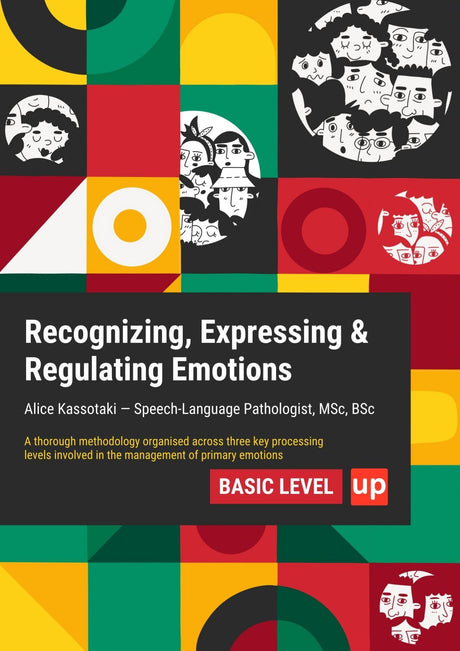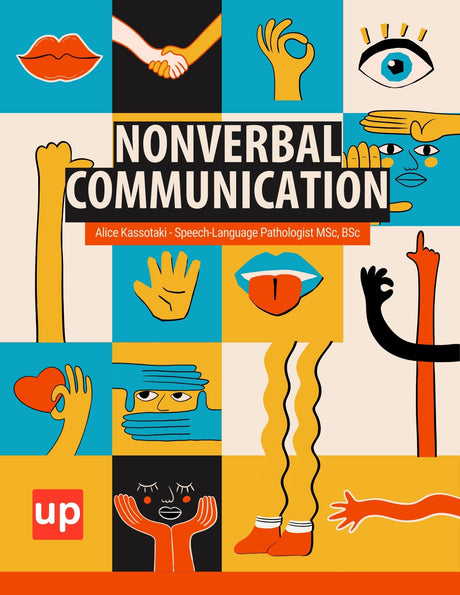Introduction: Unlocking Your Visual Superpower
From remembering a face in a crowd to navigating a familiar route, your visual memory is a silent, powerful superpower. It’s one of the core cognitive functions that allows your brain to interpret, store, and recall the world around you. While many believe memory is a fixed trait, neuroscience reveals a different story: visual memory is a skill that can be dramatically improved. This article moves beyond basic tips, exploring the science of how your brain processes visual information and providing evidence-backed strategies to enhance your ability to see, retain, and recall with remarkable clarity.
Key Points
- Visual memory—the ability to see, store, and recall images—is a trainable cognitive skill, not a fixed trait; neuroscience shows it can be strengthened through targeted techniques and lifestyle habits.
- Core strategies include active observation, pattern recognition, elaborative rehearsal, and spaced repetition, supported by advanced methods such as Memory Palaces and dynamic visualization.
- Long-term success depends on brain health, mindfulness, and continuous learning, as attention, executive function, and neuroplasticity all play critical roles in visual memory improvement.
The Neuroscience of Seeing and Remembering: How Your Brain Builds Visual Memories

Understanding how to improve visual memory begins with understanding the intricate biological processes behind it. The journey from a fleeting image to a lasting memory involves a complex interplay between your eyes, neural pathways, and specialized regions of the brain.
From Eye to Brain: The Visual Pathway
When you look at an object, light enters your eyes and is converted into electrochemical signals. These signals travel from the retina along the optic nerve to the thalamus, the brain's sensory relay station. From there, the information is sent to the primary visual cortex at the back of the brain. This entire visual system acts as the initial pipeline for all visual stimuli, capturing the raw data that may eventually become a memory.
Key Brain Regions in Visual Memory Formation and Retrieval
The visual cortex is where the brain begins to process features like color, shape, and motion. For a memory to form, this processed information must engage other critical areas. The hippocampus is vital for consolidating short-term memory into durable long-term memory. The prefrontal cortex assists in managing working memory, helping you hold and manipulate visual information in the moment. Memory retrieval is a distributed process, reactivating these same neural networks to bring a visual memory back into conscious awareness.
The Different Faces of Visual Memory
Visual memory isn’t a single entity. It includes visual short-term memory, which holds a small amount of visual information for a few seconds. Visual working memory is more active, allowing you to mentally manipulate those images, like picturing how furniture would look in a different arrangement. Finally, visual long-term memory is the vast archive where significant visual experiences are stored, from a childhood home to a masterpiece of art.
Decoding Your Visual Memory: Recognizing Strengths and Challenges
Before you can enhance your visual memory, it's beneficial to assess your current abilities. Recognizing common challenges is the first step toward targeted improvement and building a proactive strategy for cognitive enhancement.
Identifying Common Visual Memory Challenges
Visual memory deficits can manifest in various ways. You might struggle to recall faces, have difficulty remembering where you placed your keys, or find it hard to follow multi-step visual instructions. These issues can stem from attention deficits, inefficient encoding strategies, or underlying conditions. In more severe cases, significant memory loss or cognitive impairment, sometimes associated with brain injury or conditions like Alzheimer's disease, can profoundly impact memory performance.
Moving Beyond Deficits: A Proactive Approach to Enhancement
Rather than viewing these challenges as fixed limitations, adopt a growth mindset. The brain's plasticity means it can change and adapt. By consistently engaging in targeted memory exercises and adopting science-backed memory techniques, you can strengthen the neural pathways responsible for visual recall, actively working to improve your cognitive functions and build resilience against potential decline.
Foundation Strategies: Optimizing Visual Encoding for Lasting Recall
Dramatic improvement in visual memory doesn't require innate talent; it requires strategic effort. The following foundational techniques focus on improving how your brain first captures and processes visual stimuli, creating a stronger foundation for long-term retention.
The Power of Active Observation and Attention
Memory begins with attention. To remember something visually, you must first truly see it. Practice active observation by consciously focusing on the details of a scene or object. Instead of passively glancing, ask yourself specific questions: What are the primary colors? What textures do I see? This focused attention ensures that more detailed visual stimuli are sent to your brain for processing.
Strategic Chunking and Pattern Recognition
Our short-term memory has a limited capacity. Trying to memorize a complex image all at once is inefficient. Instead, use "chunking"—grouping related visual elements together. When looking at a complex diagram, for example, group components by function or location. Your brain is a natural pattern-recognition machine; leveraging this by actively looking for patterns and chunks makes complex information more manageable.
Elaborative Rehearsal for Visual Information
Simply looking at something repeatedly (rote rehearsal) is less effective than elaborative rehearsal. This involves actively connecting new visual information to knowledge you already possess. When you see a new person's face, you might associate a distinct feature with someone you already know. This process of creating meaningful connections builds a richer, more interconnected memory trace.
Spaced Repetition for Visual Retention
To transfer information from short-term to long-term memory, spaced repetition is crucial. This technique involves revisiting visual information at increasing intervals—for instance, reviewing a new chart after an hour, then a day, then a week. This method systematically interrupts the brain's natural forgetting curve, signaling that the information is important and should be stored permanently.
Advanced Techniques: Sophisticated Strategies for Dramatic Improvement

Once you've mastered the foundational skills, you can integrate more sophisticated memory techniques. These methods leverage higher-order cognitive processes to create exceptionally robust and easily accessible visual memories.
Mastering the Memory Palace (Method of Loci)
The Memory Palace is an ancient and powerful technique that involves associating items to be remembered with specific physical locations in a familiar place, like your home. To remember a list, you would mentally "walk" through your home and place each item in a different spot. This method taps into the brain's excellent spatial memory, creating a strong, ordered structure for memory retrieval.
Advanced Visualization and Imagery Techniques
Go beyond simply picturing an object. Create multi-sensory, dynamic mental images. If you need to remember a new vocabulary word, don't just see the letters; imagine a bizarre, funny, or action-packed scene that represents its meaning. The more unusual and emotionally charged the visualization, the more memorable it becomes, as the brain prioritizes novel and salient stimuli.
Leveraging Metacognition: Knowing How You Remember
Metacognition is "thinking about thinking." In the context of memory, it means understanding your own learning style. Do you remember images better if you draw them? Do you need to verbally describe a scene to lock it in? By paying attention to which memory techniques work best for you, you can tailor your approach for maximum efficiency and improve overall memory performance.
Integrating Other Cognitive Functions for Superior Visual Recall
Visual memory doesn't operate in a vacuum. It is deeply intertwined with other cognitive functions. Strengthening these related abilities can have a significant positive impact on your capacity for visual recall.
Enhancing Visual Working Memory Through Training
Specific memory exercises can directly target and improve your visual working memory. Dual n-back training, for instance, involves tracking both visual and auditory cues simultaneously, forcing your brain to update and manage information in real time. Consistent practice with such tasks can increase the capacity and efficiency of your visual working memory.
The Link Between Attention and Visual Memory Performance
Your ability to control your focus is paramount. Distractions during the encoding phase lead to weak, fragmented memories. Strengthening your attentional control through practices like mindfulness or dedicated focus training ensures that your brain can allocate the necessary cognitive resources to properly process and store incoming visual stimuli.
Executive Functions and Memory Retrieval
Executive functions, such as planning, organizing, and problem-solving, are managed by the prefrontal cortex and play a key role in memory retrieval. When you search your memory for a visual detail, you are using these functions to guide the search. Improving your executive functions helps you develop more systematic and effective strategies for accessing stored information.
Sustaining and Strengthening Your Visual Memory Long-Term

Improving your visual memory is not a one-time fix but a long-term commitment to brain health. Integrating healthy habits and continuous learning into your lifestyle is essential for lasting results.
Brain Health for Optimal Memory Function
Overall brain health is the bedrock of strong cognitive functions. This includes regular physical exercise, which increases blood flow to the brain; a balanced diet rich in antioxidants and omega-3s; and adequate sleep, during which the brain consolidates memories from the day. Protecting your brain from injury is also critical.
Continuous Cognitive Activity and Training
Just as physical exercise keeps your body strong, mental exercise keeps your brain sharp. Continuously challenge yourself with new visual tasks. Learn a new skill that involves visual detail, such as painting or photography. Engage in puzzles, memory games, and other activities that push your cognitive boundaries and promote neuroplasticity.
Mindfulness and Meditation for Enhanced Focus
Mindfulness and meditation practices have been scientifically shown to improve attention and reduce mind-wandering. By training your brain to remain in the present moment, you enhance your ability to actively observe your surroundings, leading to richer encoding of visual experiences and reducing the interference that can lead to memory loss.
Real-World Application: Visual Memory in Action
A powerful visual memory translates directly into enhanced performance in professional, academic, and personal spheres of life.
Professional Success: Remembering Faces, Data, and Presentations
In the workplace, a strong visual memory is an asset. It allows you to remember the faces and names of clients, recall key data from charts and graphs instantly, and deliver presentations without relying heavily on notes. This demonstrates competence and builds stronger professional relationships.
Academic Excellence: Mastering Visual Information in Studies
For students, much of learning is visual, from diagrams in biology to historical maps. A well-trained visual memory allows for faster and more effective studying, better retention of complex information, and improved performance on exams that require recalling visual details.
Everyday Life: Enhancing Navigation, Shopping, and Personal Recall
Beyond work and school, a sharp visual memory enriches daily life. It helps you navigate new cities without constantly checking your phone, remember your shopping list by visualizing your pantry, and, most importantly, retain the vivid visual details of cherished personal moments.
Conclusion
Improving your visual memory is an achievable goal that pays dividends across every aspect of your life. By understanding the neuroscience behind how your brain processes visual stimuli and consistently applying science-backed strategies—from foundational techniques like active observation to advanced methods like the Memory Palace—you can move beyond basic recall. This journey is not just about performing memory exercises; it's about adopting a lifestyle of cognitive engagement, prioritizing brain health, and actively shaping your brain's ability to capture the world in vibrant, lasting detail. Start by choosing one or two strategies, practice them consistently, and unlock the full potential of your visual superpower.
Frequently Asked Questions (FAQ)
What is visual memory, and why is it important?
Visual memory is the brain’s ability to encode, store, and recall information that has been seen. It allows us to recognize faces, navigate familiar spaces, and remember details from our surroundings. This cognitive function is essential for daily tasks, learning, creativity, and problem-solving, and it can be improved through intentional practice and healthy brain habits.
Can visual memory actually be improved?
Yes. Although many people assume memory is fixed, neuroscience has shown that the brain is highly adaptable. Regular use of visualization exercises, memory games, and active observation strengthens neural pathways related to visual recall. The brain’s plasticity allows for significant improvement with consistent, targeted practice.
What are the most effective techniques for improving visual memory?
Start with active observation—paying attention to colors, shapes, and spatial relationships rather than passively looking. Use chunking and pattern recognition to group information, and employ elaborative rehearsal by linking new images to things you already know. Spaced repetition helps retain visual information over time, while the Memory Palace technique and vivid imagery create strong retrieval cues.
How does attention affect visual memory?
Attention is the foundation of memory formation. If you don’t focus on what you’re seeing, your brain cannot effectively encode it. Strengthening attention through mindfulness, minimizing distractions, and practicing focus exercises ensures that visual experiences are processed deeply enough to become lasting memories.
What role does brain health play in memory performance?
Strong visual memory depends on overall brain health. Regular physical exercise enhances blood flow to the brain; a diet rich in antioxidants, omega-3 fatty acids, and nutrients supports neural function; and sufficient sleep allows the brain to consolidate memories. Managing stress and protecting against head injuries are also vital to maintaining memory capacity.
How can visual memory help in daily life?
Enhanced visual memory improves efficiency and confidence in many areas. You can remember faces and names more easily, recall visual details from presentations, study diagrams effectively, and navigate without constant reference to maps. It also enriches daily experiences, helping you retain vivid personal memories and details of the world around you.
Original content from the Upbility writing team. Reproducing this article, in whole or in part, without credit to the publisher is prohibited.
References
- Baddeley, A. (2012). Working Memory: Theories, Models, and Controversies. Annual Review of Psychology.
- Kandel, E. R. (2016). In Search of Memory: The Emergence of a New Science of Mind.
- McBride, D. M., & Cutting, J. C. (2019). Visual Memory and Cognition: An Integrative Approach. Psychology Press.
- Roediger, H. L., & Butler, A. C. (2011). The Critical Role of Retrieval Practice in Long-Term Retention. Trends in Cognitive Sciences.
- Yates, F. A. (1966). The Art of Memory. University of Chicago Press.









